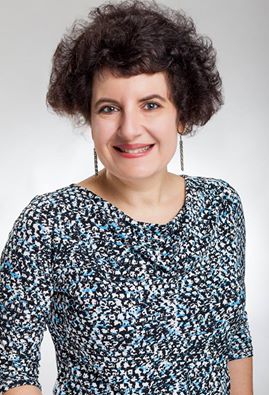This article is paid for by Amdocs, a Platinum-level sponsor of Open Networking Summit, to be held April 3-6, and was written by Linux.com.
Open Networking Summit 2017 kicks off next week and one major topic under discussion there will be the newly formed Open Network Automation Platform (ONAP) project. ONAP is quickly becoming the de facto standard platform for network automation, supporting network functions virtualization and software-defined networks (NFV/SDN) quick adoption, says Alla Goldner, an Amdocs Director of Technology, Strategy and Standardization and a member of the ONAP Technical Steering Committee (TSC) at The Linux Foundation.

Such a standard frees operators to potentially escape the dreaded “dumb pipes” fate so many had feared and instead innovate their way to powerful differentiators and higher profits as well as effectively deal with industry disruptors, or become disruptors themselves.
ONAP is already heavily favored by telecom titans that had initially set out on their own to achieve the same Olympian accomplishment, first through proprietary means and then through separate open source projects.
AT&T originally designed ECOMP and partnered with Amdocs to bring it to fruition. Orange and Bell Canada joined in to support it and it was supposed to become an open source project at the beginning of this year. Meanwhile, the Open-O project was backed by operators like China Mobile, China Telecom and Hong Kong Telecom, as well as several vendors including Ericsson and Intel, among others.
The end goal of these efforts was not to achieve an open networking harmonized automation standard wherein costs could be cut, resources could be smartly realigned, and innovation could be moved into overdrive. Thus the merger of these two projects, ECOMP and OPEN-O, into one joint effort, ONAP, was a logical and important outcome.
“Network management is very complex,” Goldner said, “and that complexity can’t be resolved unless there is a standard for all to work with – and ONAP is becoming the de facto standard.”
Here, Goldner gives us some additional insights into the project’s impact on NFV and SDN in advance of Open Networking Summit.
Linux.com: How does adopting ONAP as a standard help all operators and vendors to innovate?
Alla Goldner: A standard makes it faster and cheaper to innovate. The ECOMP platform consists of more than 8 million lines of code. There is a big group of vendors and operators all trying to develop and implement new innovations across a large mix of platforms, many of them proprietary, which then requires further work in the way of integration and orchestration. This is not an efficient, effective, cheap or easy way to bring innovations to market.
ONAP as a de facto standard removes all these obstacles so that operators and vendors alike can focus on creativity and innovation.
Linux.com: You said that ONAP is becoming that de facto standard. How are you measuring support for the project right now as the TSC works on merging, and developing, ONAP code?
Alla Goldner: There is significant enthusiasm and support for ONAP now. There are 23 members already, both platform vendors and Service Providers, while the list of operators contains some of the biggest names in the space, including AT&T, Bell Canada, China Mobile, China Telecom, and Orange. Given this significant momentum, critical mass is either already there or it soon will be. With critical mass comes significant commitment and investment in quickly maturing the standard and surrounding technologies.
Standardizing and automating the underlying NFV/SDN also enables the operator to make adjustments at any time. Eventually this means operators can easily escape vendor lock-in, which reduces costs and enables more flexibility in switching or replacing network hardware, software, or processes.
Open Networking Summit April 3-6 in Santa Clara, CA features over 75 sessions, workshops, and free training! Get in-depth training on up-and-coming technologies including AR/VR/IoT, orchestration, containers, and more.
Linux.com readers can register now with code LINUXRD5 for 5% off the attendee registration. Register now!
This article was sponsored by Amdocs, founding member of ONAP. Find out how Amdocs is leading ONAP early adopters and accelerating NFV/SDN service innovation here, and watch leading service providers and the Linux Foundation discuss what open network automation means for the industry.





